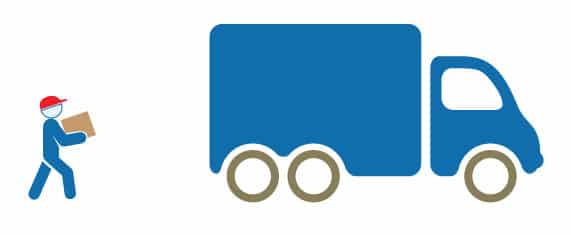The year, and indeed, the decade are rapidly coming to an end. As we look forward to 2020, there is a great horizon of branching possibilities in front of us. Knowing what’s worth pursuing, though, that’s tricky. That’s why we think eCommerce store owners should make New Year’s resolutions for their businesses in 2020.
Good New Year’s resolutions are goal-oriented. Good goals often follow the old acronym of SMART, which is:
- Specific: “I will lose 15 pounds” rather than “I will lose some weight.”
- Measurable: “The business will gain revenue” rather than “the business will grow.”
- Achievable: “The business will increase revenue by 15%” rather than “the business will become the next Tesla in three months.”
- Relevant: “We will increase web traffic by 25%” rather than “we will diversify our services to include candle-making as well as investment banking.”
- Time-Bound: “We will grow our mailing list to 10,000 subscribers by the end of the year” rather than a goal with no time frame.
Even if you don’t succeed at your goals, they’re still useful. Goals help narrow down your focus and direct your efforts toward work that matters.
As such, we’ve created a post full of ideas for you. These are possible New Year’s resolutions that you can take and turn into SMART goals for your business in 2020.
These goals are in no particular order. They’re not ranked by importance. You don’t have to do every one of them, and indeed, you shouldn’t. Take a few minutes to read this post and find a few goals that work for you and your business!
1. Increase relevant traffic to your store.
Every eCommerce store owner wants to increase the amount of traffic their website gets. After all, increased traffic usually leads to increased sales. At least, that’s the way many think of it.
This article makes the excellent point that increasing traffic matters only when the traffic is of high quality. If you currently use Google Analytics, log on and take a look at your audience’s qualities. You can learn more about their age and gender, their interests, where they live, and more. By analyzing this information, you can determine whether or not the traffic you gain is of high quality or not.
So how do you increase the relevant traffic to your store? Figure out what kind of people are buying your products and then tailor future marketing efforts to suit them. That could mean changing the audience on your pay-per-click ads or creating different kinds of media when content marketing.
2. Grow your mailing list.
“Build a mailing list” is one of the oldest pieces of digital marketing advice. It’s still really good advice because every dollar spent on email marketing has an ROI of nearly forty dollars.
If you already have a mailing list and use it for marketing, consider any of the many ways to build your mailing list.
3. Increase your website’s speed.
One of the most important factors in your website experience is speed. If your website is slow to load, this can drop your conversion rate, hurt the efficiency of your ads, and many believe it can drop your ranking in Google too. Use free tools such as Pingdom to measure how fast your website is. Follow their recommendations to reduce the overall load time. Then watch your conversion rate increase!
4. Improve your website’s SEO.
If you’re an eCommerce store owner, this likely won’t come as a surprise to you, but your search engine ranking is very important. For that reason, doing search engine optimization on your website can have a very positive impact on your traffic. You can use free tools such as SEO Site Checkup to measure your website’s SEO quality. Similar to Pingdom, you can follow their recommendations to improve your search engine ranking.
5. Start content marketing.
Looking to go beyond search engine rankings, advertisements, and social media? Many companies are, which leads them to pursue content marketing.
Put simply, content marketing means creating media your potential customers want to consume. It can come in the form of blog posts, podcasts, videos, and even social media posts. The purpose is not to directly sell but rather to raise customer awareness by providing real value.
Content takes a little while to create, but that’s what makes it unique. Many companies don’t want to spend the time creating quality content, so when you do, it sets you apart.
6. Start influencer marketing.
If you want to increase your visibility online quickly, look into influencer marketing. Simply put, many blogs or social media accounts draw a lot of attention. To keep their audience satisfied, many influencers love working with others – individuals and companies – to make content that pleases their audience.
Find some relevant influencers in your niche. Pay attention to what their audiences like to read or watch online. Then reach out to the influencer and offer them content that their audience would enjoy. You’d be surprised how well this works!
7. Set up conversion tracking.
Sometimes, understanding why your customers do what they do can be difficult. For that reason, we strongly recommend setting up conversion tracking. This allows you to measure which of your marketing initiatives have the desired effect, whether that be mailing list signups or sales.
Start by using Google Analytics for your eCommerce store. Then set up conversion tracking so you can see which pages people click on before making a purchase.
That’s just the beginning. Once you know what you’re doing, you can also add tracking codes and tracking pixels from social media. This will allow you to see which of your ads or social media posts are converting, which opens the door to creating more of what your customers like!
8. Phase out a process that’s costing you money or slowing you down.
This is a much more general New Year’s resolution for an eCommerce store owner, but it’s really important! As the years go on, we take on all sorts of responsibilities and establish all sorts of processes that keep going even when they are no longer useful.
Take a couple of weeks to figure out what’s wasting your time or money. Then figure out a way to phase it out. Sometimes a little bit of process cleanup is all your business needs to truly shine!
9. Outsource fulfillment to a third party.
Naturally, as a third-party logistics company, we’re fans of this resolution. Yet it still rings very true. Fulfillment is an albatross around the neck of many eCommerce store owners.
The process of packing and shipping orders is time-consuming and often expensive. Other companies, such as Fulfillrite, can take care of that on your behalf, which saves you time and hassles, and often money as well.
10. Improve your shipping time.
Fair or unfair, Amazon is setting online shoppers’ expectations. In 2017, 63% of online shoppers expected three-day delivery of items as the standard. In 2020, that percentage is almost certain to be higher.
Whether you ship your own items in-house or outsource to a third-party company such as Fulfillrite, you need to be aware of these expectations. If you can improve your shipping time, customers will be much more likely to continue to purchase items from you.
11. Diversify your business by releasing a new product line.
Launching a new product in a new area of business is not for the faint of heart! But successful product launches come with a number of tangible benefits that should be considered. Product launches are a great way to draw attention, increase revenue. and build new relationships. What better way is there to kick off a new year?
12. Increase your lifetime customer value.
If you ever get really deep into marketing metrics, you will probably see two acronyms pop up again and again: LTV and CAC. They stand for lifetime value (per customer) and customer acquisition cost respectively. In order to make money, you need each customer to bring in more money than it costs to acquire them.
It’s said that a good LTV/CAC ratio is 3.0 or higher, but it really depends on the industry. In any case, raising the average lifetime value of your customers can have myriad benefits. You can do this by upselling or cross-selling, or by simply having loyal customers who make repeat purchases.
13. Drop your customer acquisition cost.
We hinted at it in the previous point, but it’s important enough for a point of its own. If you can reduce the average cost to bring in a new customer, it can do wonders for the profitability of your business in the long run. Oftentimes, this means improving the conversion rate on your website or by making improvements to your marketing processes.
14. Optimize your pay-per-click ads.
If you’re looking for a specific way to drop customer acquisition cost, here’s one: optimize your pay-per-click (PPC) ads! If you use Facebook, Google AdWords, or other similar advertising systems, you’re familiar with the concept. You come up with an ad and it shows to a specific target audience.
Making subtle tweaks to your ads themselves as well as your targeted audience can have big impacts on the efficiency of your ads. Over time, you want to gradually reduce the cost per conversion, which – all else equal – will drop your customer acquisition cost.
15. Drop your shopping cart abandonment rate.
A lot of ink has been spilled by people trying to reduce shopping cart abandonment rates. Imagine a world in which four out of five shoppers at Walmart get to the checkout line and just…leave their carts there. Sadly, eCommerce store owners recognize that this is reality in online shopping.
If you have enough traffic and enough potential shoppers, dropping your cart abandonment rate from 80% to, say, 75% can lead to a big increase in sales. Here is an article that goes into detail about how precisely you can do that.
16. Get organized.
This is a classic goal but an important one. For many eCommerce store owners, money is not a limited resource. Time is.
Even if you consider yourself good at time management and organization, it never hurts to brush up. From time to time, we fall into habits that aren’t in our best interest. A new year is a great excuse to clean up and reorganize.
17. Experiment with crowdfunding.
Even for eCommerce store owners with a stable business, crowdfunding can have a flashy allure. We even recently wrote about the subject in detail.
If you feel yourself drawn to crowdfunding, why not give it a go? Crowdfunding is not just about raising money. It’s also a way to draw attention and build a community. There are tangible and incredible benefits that come from having a time-limited, very public project on a crowdfunding website. You may well pick up some new customers that way!
18. Reduce the amount of shipping damage.
We’ve talked about preventing shipping damage before. The simple fact is that broken packages create a ton of unnecessary drag. It costs money to reship goods or accept returns and it annoys the customer, potentially leading to lost future sales.
If you find yourself reshipping a lot of packages or simply ship fragile items, take a moment to consider how you can reduce shipping damage. When you have enough orders coming in, the difference between 98% intact shipments and 99% intact shipments can make a big difference!
19. Reduce packaging waste for your shipments.
You’d be surprised how wasteful shipping can be when done incorrectly. Take some time to consider how you can reduce the amount of waste in your shipping process. Sometimes this means using lighter materials or smaller boxes. Again, this is one of those situations where when you ship a lot of orders, this can make a huge difference!
20. Experiment with custom packaging.
Custom packaging is hot right now! It’s for a good reason, too. We live in the era of social media and unboxing videos. When your customers experience something that goes beyond the typical “brown box on my doorstep,” they will be a lot more likely to remember you. If you’ve never created a custom packaged item, give it a try and see how it goes!
Final Thoughts
The new year is a fresh start, and it gives you the perfect excuse to make positive changes in your business. Take two or three of the ideas from this list, and apply them to your business. Let us know if you have any success!
Good luck and Happy New Year 🙂
You’ve done everything by the book. Your Kickstarter campaign is almost ready to launch.
You made a great product. Built an audience. Set up a campaign page.
But how do you ship it?
We put this checklist together to help you get started. It's free.





